[One]
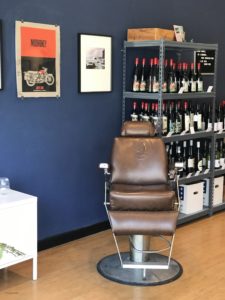 JAMES WEST’S NORTH ASHEVILLE WINE SHOP, Westlake Wines, is a good-looking space. The shop’s blond wood floors have a bright polish, and its slate blue walls are decorated with some of its owner’s photography collection that follows a surfing theme. Along with the central table set-up and a burgundy wing chair tucked away in a corner (Moxie’s favorite spot), furniture at Westlake consists of a pair of well-traveled lounge chairs in faded brown leather. But on second glance you notice that one of these is, quite incongruously, a barber’s chair. “The Chair is here,” James proudly declared in an Instagram post last October. “It’s even got an ashtray in the arm. Will be put to use Monday. Just a little up off the ears.”
JAMES WEST’S NORTH ASHEVILLE WINE SHOP, Westlake Wines, is a good-looking space. The shop’s blond wood floors have a bright polish, and its slate blue walls are decorated with some of its owner’s photography collection that follows a surfing theme. Along with the central table set-up and a burgundy wing chair tucked away in a corner (Moxie’s favorite spot), furniture at Westlake consists of a pair of well-traveled lounge chairs in faded brown leather. But on second glance you notice that one of these is, quite incongruously, a barber’s chair. “The Chair is here,” James proudly declared in an Instagram post last October. “It’s even got an ashtray in the arm. Will be put to use Monday. Just a little up off the ears.”
During my visit last fall, when I complimented him on the actual lounge chair, an Eames reproduction, he mentioned he’d recently become friendly with the owners of The Local Barber & Tap, a downtown barbershop where, this being Asheville, craft beer is served. Courtesy of them, he was now awaiting the arrival of a piece of furniture to complete the shop’s layout. Aware that he hosted wine tastings and other gatherings, James’ new friends asked if they could set up their extra barber chair at Westlake to promote their services at one of his in-store events. They proposed, literally, to offer haircuts inside his shop. Not unlike the Italian wine specialist who took a look at the diverse Westlake inventory before pitching pelaverga, The Local Barber guys must have caught something in his non-conforming attitude that suggested an evening of wine, beer, scissors, and razors was not an outlandish idea. At least, not in Asheville.
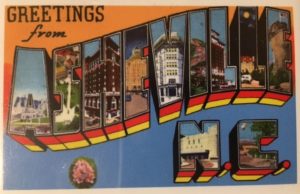
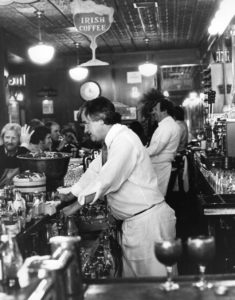
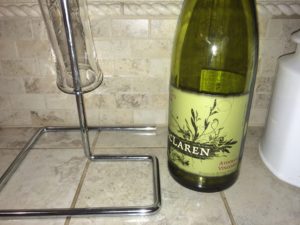

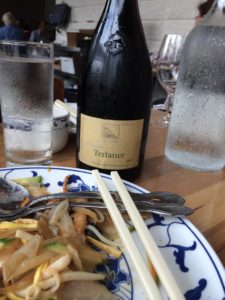
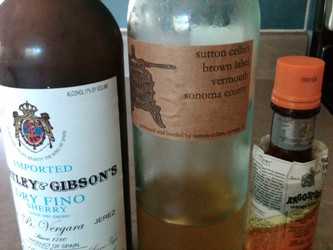 IT WAS A PLEASANT SURPRISE TO FIND OUT earlier this year from my friend Carl Sutton that his Sonoma County Brown Label vermouth, a labor of love if there ever was one, had been featured in the New York Times. I became a convert to this extraordinary aperitif wine last fall and subsequently plied friends and family with it between Thanksgiving and New Year’s Eve. At the end of January, I brought a bottle to a friend’s restaurant in Napa Valley to mix “Carlitos” (a Cava-sherry-vermouth cocktail; recipe noted below) for his manager and him. A couple of wine industry friends were in tow. It was roundly agreed that, on top of experiments with hand-made vermouth being a pleasant way to spend a Friday afternoon, this dry, rich, botanically expressive wine was good stuff. Then Jordan MacKay’s article appeared in the Times in early February. Echoing Julia Child, he observed that while the supermarket brand vermouths we Americans are used to drinking are almost unmentionable, the Brown Label is another beverage entirely. The publication of MacKay’s article was an event I figured would alter Carl’s world of artisan winemaking for good and perhaps, too, my chances of continuing to buy it at such a friendly price.
IT WAS A PLEASANT SURPRISE TO FIND OUT earlier this year from my friend Carl Sutton that his Sonoma County Brown Label vermouth, a labor of love if there ever was one, had been featured in the New York Times. I became a convert to this extraordinary aperitif wine last fall and subsequently plied friends and family with it between Thanksgiving and New Year’s Eve. At the end of January, I brought a bottle to a friend’s restaurant in Napa Valley to mix “Carlitos” (a Cava-sherry-vermouth cocktail; recipe noted below) for his manager and him. A couple of wine industry friends were in tow. It was roundly agreed that, on top of experiments with hand-made vermouth being a pleasant way to spend a Friday afternoon, this dry, rich, botanically expressive wine was good stuff. Then Jordan MacKay’s article appeared in the Times in early February. Echoing Julia Child, he observed that while the supermarket brand vermouths we Americans are used to drinking are almost unmentionable, the Brown Label is another beverage entirely. The publication of MacKay’s article was an event I figured would alter Carl’s world of artisan winemaking for good and perhaps, too, my chances of continuing to buy it at such a friendly price.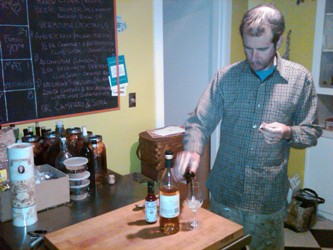 As both a friend and professional colleague, I’ve had a unique view into Carl’s winemaking world. Six years ago, I helped him sell his wines to a handful of restaurants and retailers in the Bay Area. Meeting at his and his wife’s San Francisco apartment to organize our sales plan, I took note of regular updates to the classroom-sized chalkboard on their kitchen wall. The board would tell intertwining tales. It served mainly as a calendar for a busy schedule of distributor visits across the country and event dates in and around the city. But also I recall notations of wine science data, interspersed with abacusian reminders (“$$owed from Ohio!”), domestic exhortations (“Buy coffee!!”), and a sidebar devoted to drink recipes and ideas, wacky and otherwise. The serious purpose of our work meetings notwithstanding, my powers of recall in the wake of visits to Carl’s flat have always been softened by his more formidable skills at hospitality. I have, in fact, come to believe that his favorite adjective to pair with the word “wine” is “fortified.” So The Chalkboard, like a kiss or a cigar, might just have been a chalkboard. What I know for sure is that Carl Sutton’s kitchen, like his mind, is an ideas factory for riffs on the theme of fermented grape juice.
As both a friend and professional colleague, I’ve had a unique view into Carl’s winemaking world. Six years ago, I helped him sell his wines to a handful of restaurants and retailers in the Bay Area. Meeting at his and his wife’s San Francisco apartment to organize our sales plan, I took note of regular updates to the classroom-sized chalkboard on their kitchen wall. The board would tell intertwining tales. It served mainly as a calendar for a busy schedule of distributor visits across the country and event dates in and around the city. But also I recall notations of wine science data, interspersed with abacusian reminders (“$$owed from Ohio!”), domestic exhortations (“Buy coffee!!”), and a sidebar devoted to drink recipes and ideas, wacky and otherwise. The serious purpose of our work meetings notwithstanding, my powers of recall in the wake of visits to Carl’s flat have always been softened by his more formidable skills at hospitality. I have, in fact, come to believe that his favorite adjective to pair with the word “wine” is “fortified.” So The Chalkboard, like a kiss or a cigar, might just have been a chalkboard. What I know for sure is that Carl Sutton’s kitchen, like his mind, is an ideas factory for riffs on the theme of fermented grape juice. 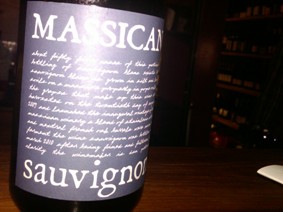 HERE’S SOMETHING I’VE LEARNED since moving to Napa Valley seven years ago: among the winemaking set, kids’ birthday parties are popular occasions to debut side labels and one-offs, or otherwise unload mistakes on friends. For a good example of the former, see Dan Petroski, whose full-time job is assistant winemaker at Larkmead Vineyards in Calistoga. On the side, he runs a tiny project he founded last year called Massican, with a production so limited it makes some boutique winery outfits seem Gallo-esque by comparison. I first came across Dan’s unique white wines at a mutual friend’s daughter’s birthday in May. It was a warm day in a St. Helena park, and the wines were an unexpected but very welcome find. One of the bottles—a crisp, delicious sauvignon blanc—etched a deep impression on my palate. Over hot dogs and cake, he agreed to show me around its source, a vineyard in the Napa hinterlands of Pope Valley.
HERE’S SOMETHING I’VE LEARNED since moving to Napa Valley seven years ago: among the winemaking set, kids’ birthday parties are popular occasions to debut side labels and one-offs, or otherwise unload mistakes on friends. For a good example of the former, see Dan Petroski, whose full-time job is assistant winemaker at Larkmead Vineyards in Calistoga. On the side, he runs a tiny project he founded last year called Massican, with a production so limited it makes some boutique winery outfits seem Gallo-esque by comparison. I first came across Dan’s unique white wines at a mutual friend’s daughter’s birthday in May. It was a warm day in a St. Helena park, and the wines were an unexpected but very welcome find. One of the bottles—a crisp, delicious sauvignon blanc—etched a deep impression on my palate. Over hot dogs and cake, he agreed to show me around its source, a vineyard in the Napa hinterlands of Pope Valley.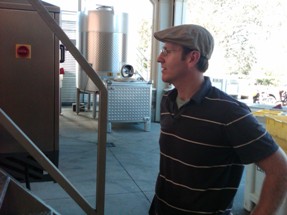 Dan knows from out-of-the-way places. It could be in his Italian genes: his great-grandfather grew up north of Naples in the foothills of Monte Massico, for which he named his label. He got his winemaking start in 2005 working at Valle dell’Acate, a winery in southeast Sicily whose location must rival the Corleones’ ancestral hometown in the category of remote getaways. And he lives in Calistoga, at the northern end of Napa Valley. While not as far-flung as Sicily, the pickup trucks and minivans there still appear to outnumber Range Rovers and Maseratis. The town is its own little island of unpretentious solitude.
Dan knows from out-of-the-way places. It could be in his Italian genes: his great-grandfather grew up north of Naples in the foothills of Monte Massico, for which he named his label. He got his winemaking start in 2005 working at Valle dell’Acate, a winery in southeast Sicily whose location must rival the Corleones’ ancestral hometown in the category of remote getaways. And he lives in Calistoga, at the northern end of Napa Valley. While not as far-flung as Sicily, the pickup trucks and minivans there still appear to outnumber Range Rovers and Maseratis. The town is its own little island of unpretentious solitude.